
Photograph courtesy of Connecticut State Historic Preservation Office
Connecticut, Reference number: 100006451
Area of Significance: Architecture, Community Planning and Development
Period of Significance: 1968-1969
The building is a notable design by internationally renowned Modern architect, Marcel Breuer (1902-1981) in collaboration with architect Robert Gatje (1927-2018) and the structural engineering firm Weidlinger Associates. It is a key site in the Long Wharf area which was an important feature in New Haven’s prominent mid-century urban renewal program. Despite notable alterations to its massing and landscape, it retains its most iconic characteristics and is still widely recognized as a key example of Modern architecture in Connecticut.
Link to file
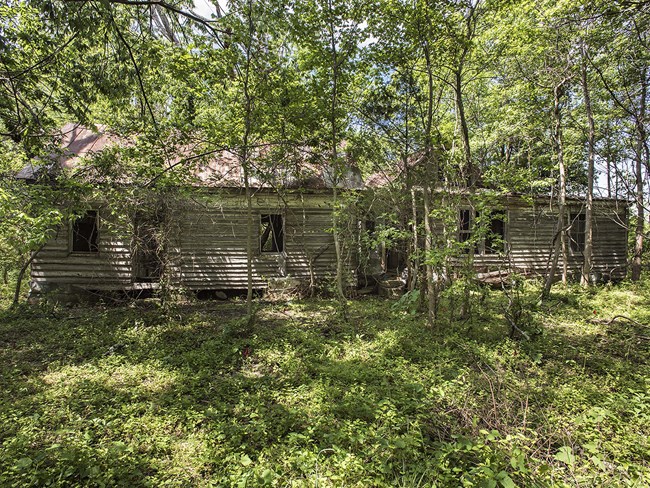
Image courtesy of William J. Graham, 2018
Chief Otho S. and Susie P. Nelson House
Connecticut, Reference number: 100004262 Restricted/Redacted
Area of Significance: Ethnic Heritage: Native American, Rappahannock Chief Otho S. Nelson and Tribal Secretary Susie Pearl Nelson
Period of Significance: 1924–1967
This house is in poor condition: windows and doors are missing, and interior finishes have crumbled, exposing the lath in many areas. However, the nomination's integrity analysis is short but focused, methodically addressing each aspect of integrity and placing the poor condition of the house into context. For example, with respect to design, materials, and workmanship, the nomination explains that even it its current state, it presents “considerable information about historic uses of the dwelling and its evolution over several decades. Likewise, because the dwelling has not been substantially altered in the past several decades, its integrity of design has been retained” (Registration Form, p. 16).
Link to the file

Photograph by Emily Scherrer and/or Delia Hagen
Montana, Reference number: 100000914
Area of Significance: Ethnic Heritage: Black
Period of Significance: 1888-1966
This property was listed as part of the Multiple Property Documentation “African-American Heritage Places in Helena, Montana.” Although this building appears dramatically changed, (1) these changes occurred within the period of significance and (2) it is a rare example in Montana of a home built and owned by a Black family.
Link to the file
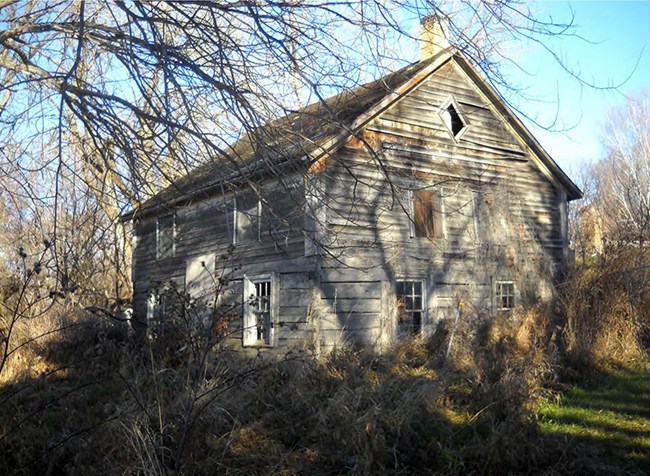
Photograph by Steve C. Martens, courtesy of North Dakota State Historic Preservation Office
North Dakota, Reference number: 100001744
Area of Significance: Archeology, Architecture, Commerce, Exploration/Settlement, Historic Aboriginal, Historic Non-Aboriginal, Politics/Government, Transportation
Period of Significance: 1868-1967
This 1868 log house in a remote area of North Dakota is not believed to have been significantly altered but was difficult to document due to its deteriorated condition. The use of the property as a one-time center of trade and local meetings provided a strong justification for statewide significance.
Link to the file

Photograph by Mella Rothwell Harmon, courtesy of Nevada State Historic Preservation Office
Nevada, Reference number: 15000009
Area of Significance: Ethnic Heritage: Black, Entertainment/Recreation
Period of Significance: 1925-1974
Despite several non-historic alterations to the building, including the carport and masonry wall additions, the Harrison’s Guest House retains integrity of location, setting, design, materials, workmanship, feeling, and assocation. It reflects its importance as the only known surviving example of an African American boarding house in Las Vegas from the segregation era.
Link to the file
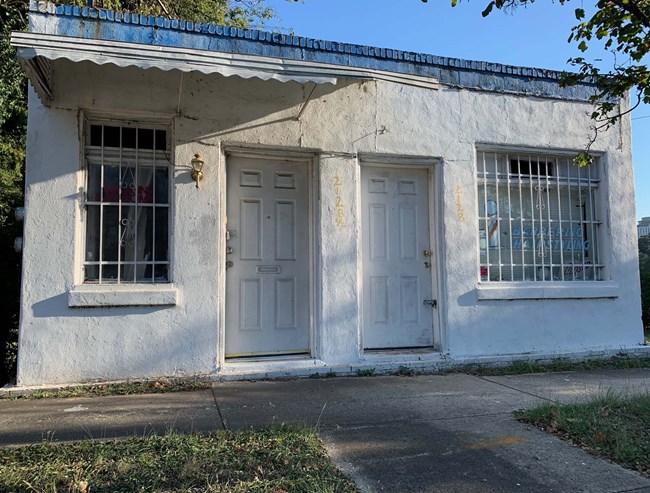
Photograph by Caitlin Cutrona, courtesy of South Carolina State Historic Preservation Office
South Carolina, Reference number: 100006884
Area of significance: Social History, Ethnic Heritage: Black
Period of Significance: 1945-1975
Holman’s Barber Shop is significant for its representation of the historic role of Black barber shops within the African American community, and for its connection with Columbia’s segregation history. Holman’s Barber Shop does not have a distinct architectural style, but rather is an expression of a mid-20th-century vernacular commercial building with minimal exterior ornamentation. It is one of the only mid-century Black-owned barber shops in Columbia known to still stand. Holman’s provided Black Columbians and other African Americans with an alternative public space where patrons could meet, freely converse, and receive quality, convenient service without fear of the harassment and degradation that often awaited them in the white-controlled spaces of mid-20th-century Columbia, South Carolina.
Link to file
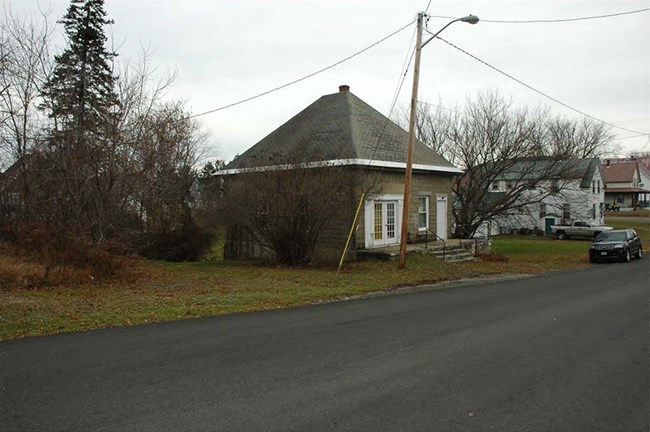
Photograph by Michael Goebel-Bain, courtesy of Maine State Historic Preservation Office
Maine, Reference number: 100003587
Area of Significance: Politics/Government
Period of Significance: 1911-1968
The Island Falls Town Hall and Jail was built in 1910 of decorative concrete block. Although the jail cells survive in the basement, the loss of the main floor interior finishes, windows, and doors detract from integrity. Nevertheless, this former town hall retains integrity of setting and location, and it’s massing remains unchanged. It was nominated for its significance under Criterion A (history) not C (design) and even changed, it remains an important part of Island Falls history.
Link to file
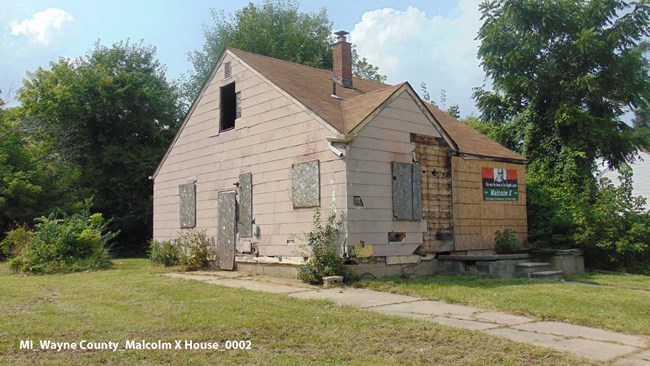
Photograph by Tareq A. Ramadan and Aaron Sims, courtesy of Michigan State Historic Preservation Office
Michigan, Reference number: 100007205
Area of Significance: Ethnic Heritage: Black, Social History: Civil Rights
Period of Significance: 1952-1953
The nomination is for the house where Malcolm X lived with his brother when he first met Elijah Mohammed, took the name Malcolm X, and studied for the ministry in the Nation of Islam. The year that Malcom X spent residing in the house was pivotal in his rise to become a significant voice in the Civil Rights era and beyond. The nomination also does a good job of explaining that the significance of the property is not dependent on its physical condition and that despite the loss of many interior features, the house still retains sufficient integrity to convey its important associations.
Link to file

Image courtesy of Erica Ruggiero, 2022
Muddy Waters House
Illinois, Reference number: 100008485
Area of Significance: Performaing Arts, McKinley Morganfield (Muddy Waters) Period of Significance: 1954–1973
Sometimes, a place is so altered as to bring the integrity of the place into question. In these situations, comparison with other properties is important to determine if there is a property—or which property—might best tell the story of a significant event(s) or person(s).The Muddy Waters House, listed in 2022, is just such a place. Regarded as the “Father of Chicago Blues,” McKinley Morganfield—better known by his stage name “Muddy Waters”—was “one of the most important figures in the development of the distinctive electrified sound that married the Delta blues, from his home state of Mississippi, with amplification to create a powerful new genre of the urban blues unique to Chicago” (Registration Form, p. 9). A comparison study of residences associated with Waters was undertaken to demonstrate that while the residence at 4339 S. Lake Park Avenue has diminished integrity of materials, design, and workmanship, “it is the best intact residence associated with his life and career” (Registration Form, p. 5).
Link to the file

Photograph by Mary Lane Carleton, courtesy of Louisiana SHPO
Louisiana, Reference number: 12001241
Area of Significance: Engineering
Period of Significance: 1964-69
This 45-story building is exceptionally important for its method of construction, the use of a then-new, patented piling system that allowed for construction of tall buildings on soft, alluvial soils. The use and success of this system led to the construction of other tall buildings in New Orleans and similar environments. The nomination provides a clear description of the engineering problem solved in the building’s construction. Despite an interior that was gutted following Hurricane Katrina, the building retains integrity: its continued massive presence at the edge of the Mississippi River attests to the significance of its innovative engineering.
Link to file
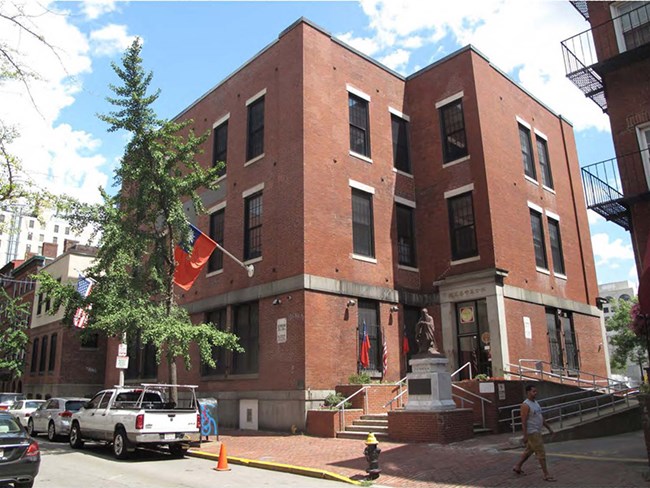
Photograph by Neil Larson, courtesy of Massachusetts State Historic Preservation Office
Massachusetts, Reference number: 100001458
Area of Significance: Architecture, Education, Ethnic History: Asian, Social History
Period of Significance: 1848-1976
The Quincy Grammar School was nominated as a very rare example of a public school closely associated with the Chinese and Chinese-American community. Truncated to three (from four) stories after a hurricane damaged its roof, the Quincy Grammar School achieved its existing external appearance in 1938, within its period of significance.
Link to the file

Photograph courtesy of Camilla Mingay
Rice Bay
Michigan, Reference number: 15000353
Area of Significance: Agriculture, Conservation, Native American Heritage
Period of Significance: 1784–1965
Rice Bay in Michigan is a traditional cultural place (TCP) listed as a site for its significance in the cultural practices of the Ojibwe people. Human impacts—such as flood control measures, irrigation efforts, and recreational activities—in the nineteenth and twentieth centuries have degraded or eliminated many rice beds throughout the region. Despite both the human impacts and natural changes that have diminished the size of the place as traditionally used by the Ojibwe people, it retains integrity and continues to convey its significance.
Link to the file
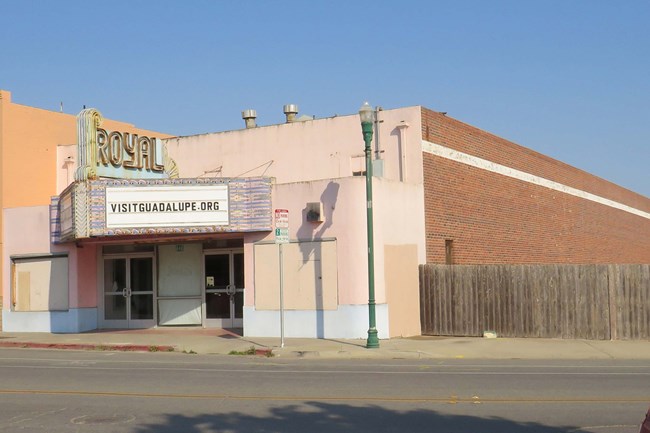
Photo courtesy of Carole Denardo, 2021
Royal Theater
California, Reference number: 100007474
Area of Significance: Architecture, Japanese Heritage, Entertainment/Recreation
Period of Significance: 1940–1942
The current condition of a building may provoke an immediate “no, not eligible, lacks integrity” response. Deterioration from a long-term vacancy can certainly impact condition but not necessarily its integrity. Such is the case with the Royal Theater in Guadalupe, California, vacant since 2001. The building was listed in the National Register in 2022. The nomination walks the reader through the seven aspects of integrity with one to three sentences addressing each aspect.
Link to the file
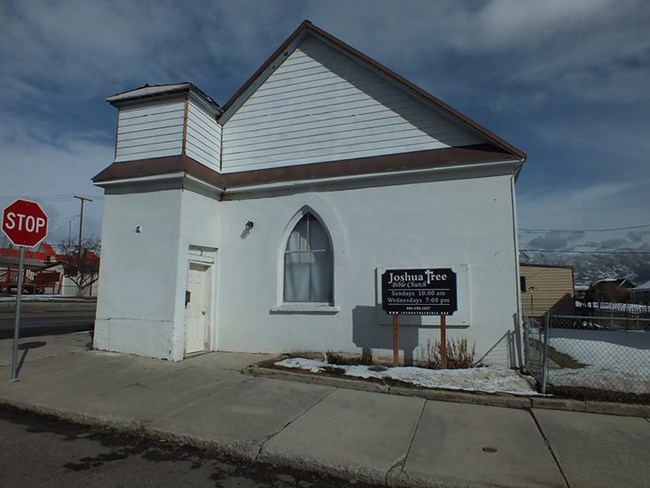
Courtesy of Montana State Historic Preservation Office
Montana, Reference number: 100003199
Area of Significance: Social History, Black Heritage
Period of Significance: 1901-1964
Several changes have occurred to the exterior of the building over time, including the removal of the belfry, parsonage and apse; the stuccoing the exterior walls; and replacement of the original roofing with ribbed metal. However, many character defining features remain, such as the original massing, bell tower, and fenestration.
Link to file
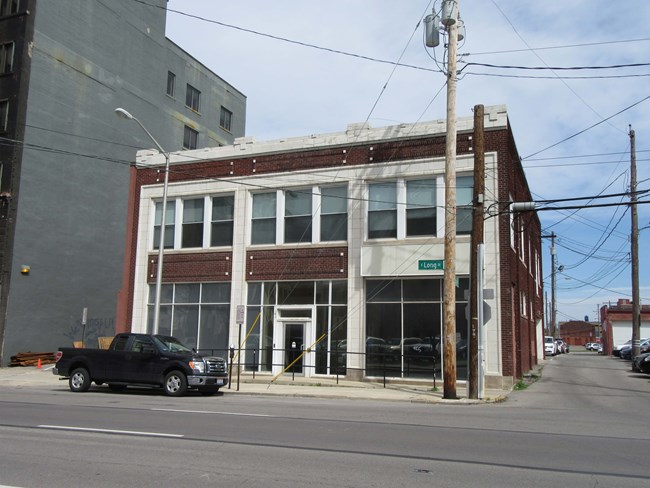
Photograph by Alex Green, courtesy of Ohio State Historic Preservation Office
Ohio, Reference number: 100004542
Area of Significance: Commerce
Period of Significance: 1916-1925
This nomination succeeded because of its strong historic context describing the property’s significance and the building’s retention of character-defining features. The property remains recognizable as an early-20th century automobile dealership and reflects its association with the growing automotive industry of the period.
Link to file
Last updated: January 12, 2025
